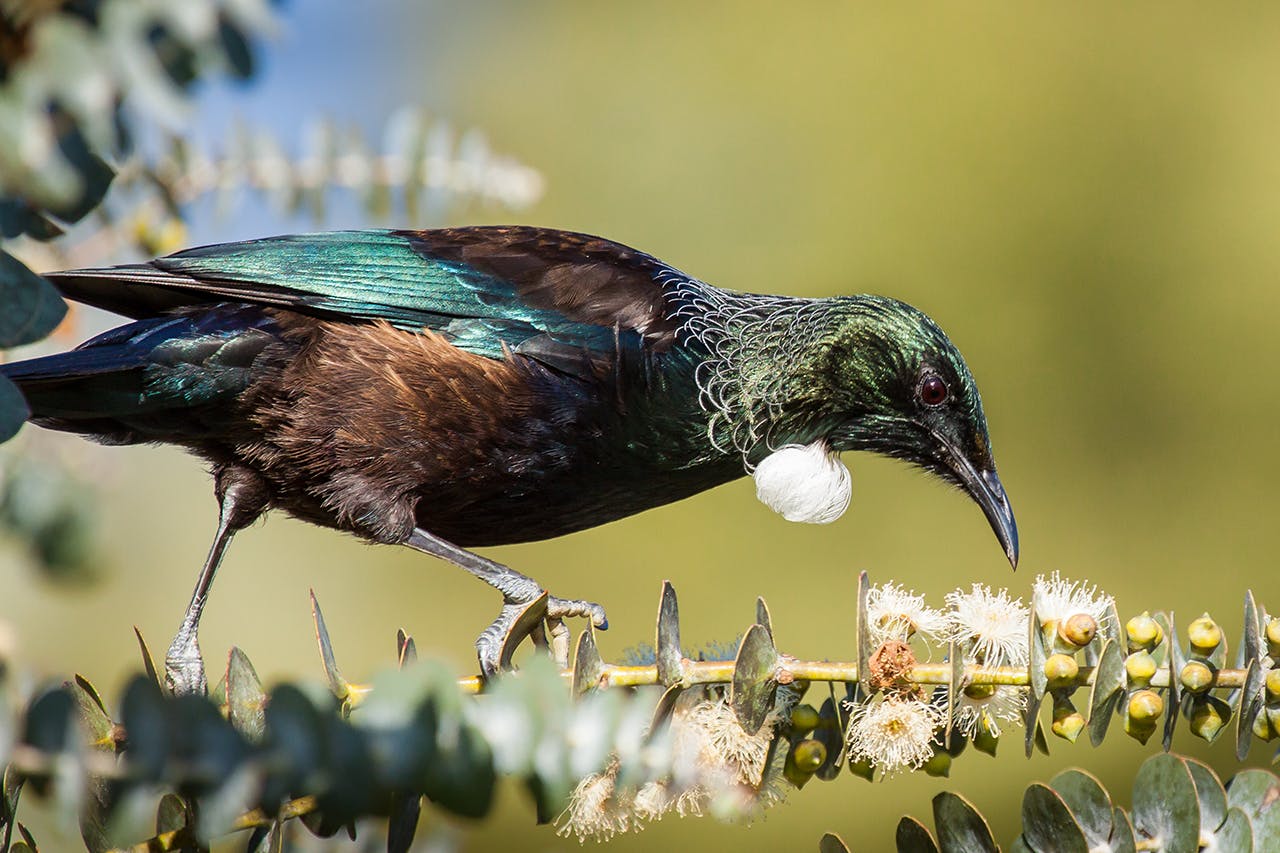Tui are found everywhere, which is music to our ears
Everyone knows the iconic tui. Its beautiful song of loud and complicated tuneful notes interspersed with coughs, grunts and wheezes is widely recognisable. Along with the bellbird, they would have to be our most melodic native bird.
Tui are widespread and locally abundant on the North, South and Stewart islands as well as many offshore islands. The drier, largely open, country east of the Southern Alps is about the only area where they are scarce.
Tui respond extremely well to pest control programmes which target possums, rats and mustelids as these animals are their main nest predators. Resulting population increases are significant. They are a very adaptable species, found in native forest and scrub, rural gardens, stands of flowering kowhai and gums and in suburban parks and gardens.
From a distance, a tui looks to be completely black but in good light the blue, green and bronze iridescent sheen and distinctive white throat tufts (poi) become obvious. The nape and sides of the neck have delicate, filamentous white feathers while two white shoulder patches on the upper wings can be seen only when in flight.
The only physical difference between a male and female is size. On average a bird will be around 30cm long with an adult male weighing 125g and a female 90g.
The breeding season runs from September to February. Nest building, incubation and brooding are all chores carried out by the female, although the male will jump in and lend a hand once the chicks are born and need feeding. A nest will usually contain 2-4 white or pale pink eggs, marked with reddish-brown spots and blotches. Incubation and fledging are relatively fast – 14 days and 23 days respectively.
The tui’s diet varies depending on the seasonal availability of nectar and fruits but their preference is for nectar and honeydew. During the breeding season, they supplement their nectar diet with large invertebrates such as cicadas and stick insects.
The top six tui plants are kowhai, mountain flax, cabbage tree, mountain fivefinger, ngaio, tree fuschia.
– Matt Winter is a Marlborough-based nature photographer







